Currently Empty: $0

Organizations must address the employee need for connection and well-being amid the Great Attrition. To do so, consider the power of adaptability.

November 22, 2021If the pandemic has taught us anything, it’s that there is no “stop” button for change. Take the Great Attrition, for example. Employees are quitting at record rates and cite a lack of connection to the organization as a primary reason. Many feel increased burnout, grief, and exhaustion. Employees also report wanting to feel valued and treated as an individual, yet organizations are relying on transactional strategies to retain them.
Organizations must address this employee’s need for connection and well-being. One approach is building adaptability, the ability to learn flexibly and efficiently and to apply that knowledge across situations. Being adaptable boosts well-being turns adversity into a learning opportunity, and helps create an environment where relationships can thrive.
Adaptability operates and drives results at four distinct levels:
- According to recent Industry research, the top two factors that became more important in the past six months to employees planning to leave their job were a need to restore work-life balance (65 percent) and being able to prioritize physical and emotional well-being again (63 percent). Adaptability can improve well-being and reduce burnout, primarily through the continuous adoption of adaptable mindsets and healthy habits under pressure. It fuels the consistent self-care necessary to deal with changing demands and cope with adversity.
- Not feeling valued by one’s manager (52 percent) and not feeling a sense of belonging (51 percent) were two frequently cited reasons employees left a job in the past six months. Adaptability improves the ability to be vulnerable and empathetic with others, increasing the capacity to display compassionate leadership and turn difficult interpersonal situations into relationship-building opportunities. It helps us connect with others with greater authenticity—normalizing the importance of quality relationships at work and providing the skill set to strengthen them, especially in virtual settings.
- One of the top five reasons that changed in importance over the past six months for individuals who chose to stay at a job was working with people who trust and care for one another (48 percent). Level of trust in and care for teammates contributes to the perception of psychological safety—reinforcing or weakening adaptability. The greater the psychological safety, the more quickly belonging, engagement and ability to deal with stress can improve because people feel supported. Adaptability’s renewing effect on relationships can drive the creation of attractive team environments.
- Fifty-four percent of employees said that not feeling valued by their organization was the top reason for leaving their previous job. Organizational adaptability serves as the ultimate reinforcer for all levels because it provides an overarching sense of identity and distinctive culture for employees. It creates a cultural core that helps individuals thrive in ambiguity and uncertainty, giving them a sense of autonomy, belonging, and competence. An adaptability-building program reflects a people-first message and empowers individuals to improve their well-being and relationships at work.
Building adaptability begins with leaders dealing with change gracefully, despite the tendency to default to fear or familiar solutions. Leaders must bolster their own well-being and transform their relationship with change by building adaptability as an evergreen skill.
Our Great Attrition research suggests that employees are prioritizing relational aspects while leadership is focused on transactional elements. One solution to this dissonance is having key influencers across the organization—with more direct team impact—model adaptability. During large-scale change initiatives, the reach and consistency of the change story impact the speed at which employees adopt and sustain new adaptable behaviors.
Additionally, personalizing a skill-building program to reflect employee developmental areas and broader skill gaps can boost effectiveness. Outside of capability building, other aspects—such as re-benchmarking compensation, reevaluating the operating model, and deploying formal employee-listening strategies—should happen simultaneously to reinforce new behaviors.
Adaptability holds the key to equipping the workforce with skills to boost well-being and enrich relationships—turning the primary drivers of the Great Attrition into primary opportunities.
***
This blog post is part of a series on the Great Attrition, exploring the immediate actions leaders can take to retain and attract talent at a time when employees are leaving their jobs in droves. Topics include how to keep top-performing talent, the nuances emerging in different industries, adaptability as an antidote to burnout, the implications for the labor shortage and what to do about it, how to build a sense of community in the new employee landscape, the complex relationship between DE&I and attrition, the importance of employee experience, socioemotional support as the organization’s social glue, the need to reimagine and personalize flexibility at work, competition from the gig economy and entrepreneurism, and how to prevent premature retirement.
Sources: GWFM research and secondary resources from McKinsey
Subscribe as a member: https://globalwfm.com/become-gwfm-member/
Visit us for WFM Learning Academy: https://gwfmlearning.online/courses/








